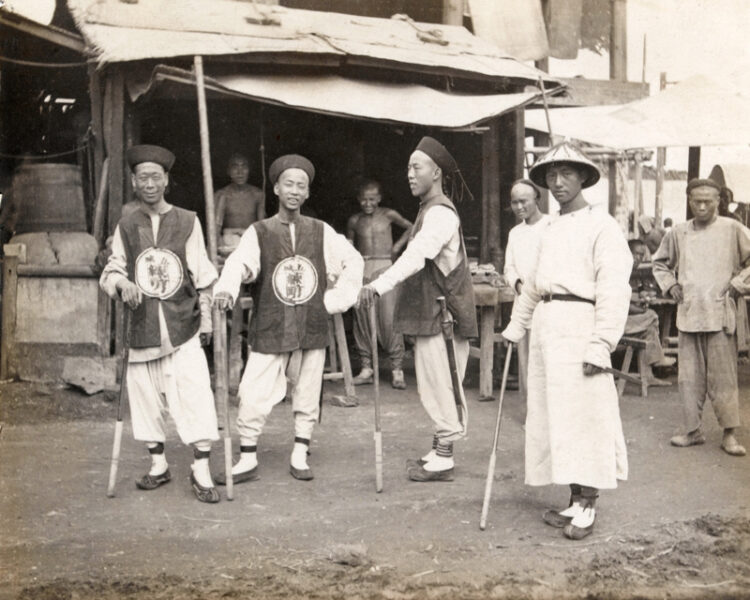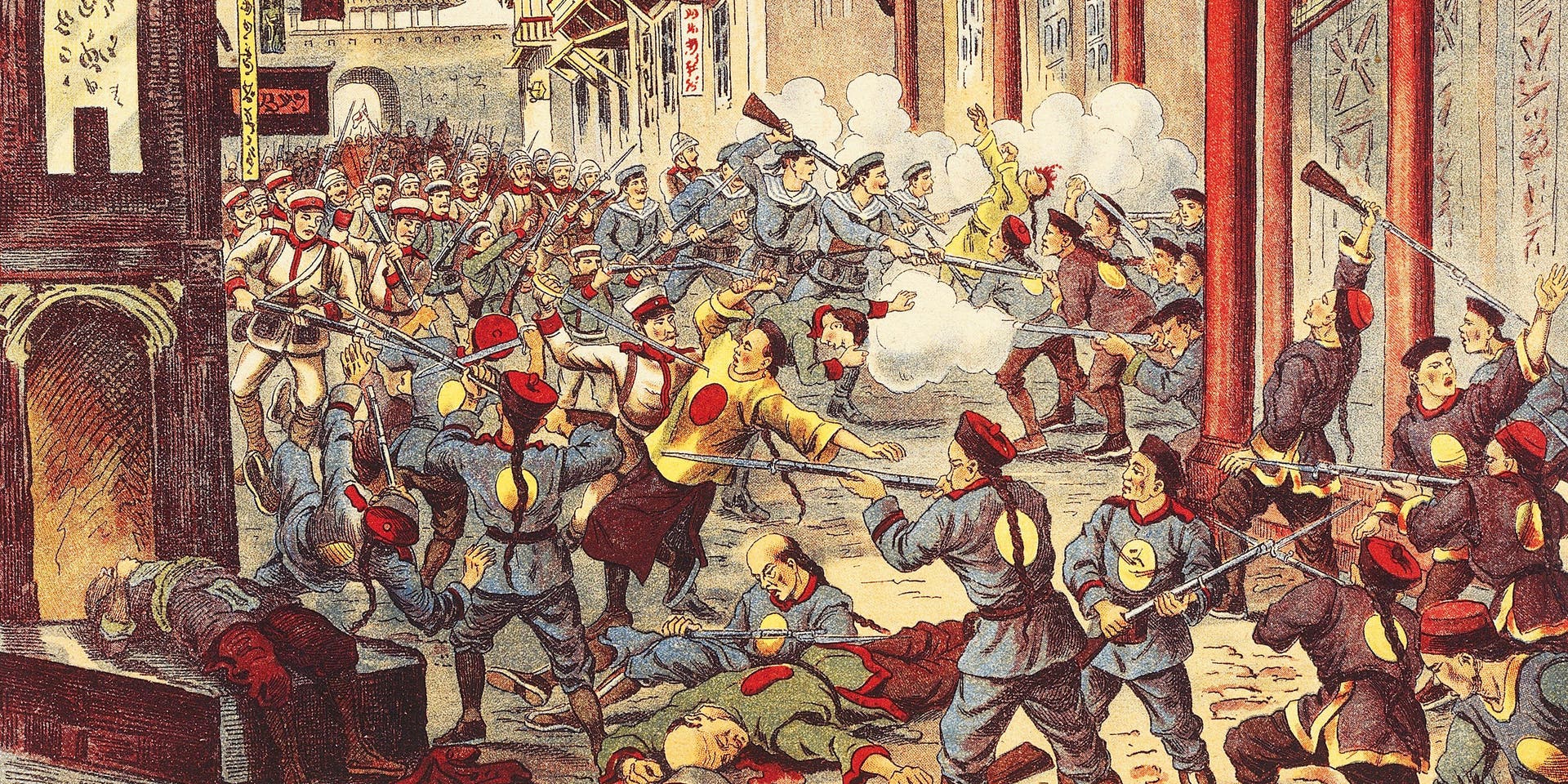In the late 19th century, China experienced a tumultuous period marked by internal strife, foreign influence, and social unrest. It was during this time that the Boxer Rebellion, a significant uprising against foreign powers and their influence in China, unfolded. Central to this historical event was the clash between martial arts and guns, as traditional Chinese martial arts collided with the modern firepower of the era. “Boxer” was the English name given to a Chinese secret society. The society’s original aim was to destroy the ruling Qing dynasty and privileged Westerners in China.
The Boxers, also known as the Society of Righteous and Harmonious Fists, were a society that emerged in response to widespread discontent among the Chinese population. Drawing upon traditional martial arts practices, the Boxers sought to combat foreign imperialism and perceived Western and Japanese influence in China. They believed that through their mastery of martial arts, they possessed supernatural powers that made them impervious to harm. Martial arts played a central role in the identity and beliefs of the Boxers. They believed that their mastery of ancient techniques, combined with spiritual rituals and incantations, rendered them invincible against foreign powers. Their training emphasized physical conditioning, combat techniques, and the cultivation of a fervent anti-foreign sentiment. The Boxers believed that their martial arts skills and spiritual practices would protect them from the fired rounds that came out of Western firearms.

The Boxers began their uprising in the late 1890s, by attacking Christian missionaries, Chinese Christians and foreigners in northern China. An international relief force was dispatched to quell the attacks. As the Boxer Rebellion intensified, the clash between martial arts and modern weaponry became inevitable. The Boxers found themselves facing the well-equipped forces of the Eight-Nation Alliance, composed of troops from several Western countries. The United States and seven other countries—Austria-Hungary, France, Germany, Great Britain, Italy, Japan, and Russia-all had interests in China. The Boxers’ reliance on traditional martial arts techniques proved insufficient against the overwhelming firepower of rifles, artillery, and machine guns employed by the Alliance.

In the Battle of Tientsin (Tianjin) in 1900, the Boxers confronted the combined forces of the Eight-Nation Alliance. Thousands of Boxers from the countryside converged upon Tientsin. The Chinese army near Tientsin stood by and awaited orders from Peking to either support the Boxers or protect the foreigners. The Chinese army numbered an estimated 15,000 in Tientsin plus Boxers armed with swords, spears, and antique guns. The eight-nation alliance quickly dispatched a 20,000-strong international force. The Empress Dowager Cixi ordered her imperial forces to block the advance on Beijing by the commander, Lieutenant-General Sir Alfred Gaselee, a British officer of the Indian Army. U.S. Marines participated in several actions in China.

Despite their martial arts prowess and their belief in invulnerability, they were ill-prepared for the modern weaponry unleashed upon them. The Boxers’ traditional fighting methods and their faith in ancient practices were no match for the devastating firepower wielded by the Alliance, ultimately resulting in their defeat. The Boxer Rebellion serves as a historic reminder of the clash between martial arts and modern military technology. It highlights the limitations of relying solely on traditional fighting methods in the face of advanced firearms. The Rebellion marked a turning point in China’s history, furthering the recognition of the need for modernization, military reforms, and a reassessment of martial arts’ role in warfare. China agreed to pay more than $330 million in reparations, by the terms of the Boxer Protocol, which officially ended the rebellion in 1901.

The National Army Museum notes that the ‘Tigermen’ formed irregular units of the Chinese imperial army in the 18th and 19th centuries and were used primarily as skirmishers. They are believed to have worn tiger caps and striped tunics and trousers, in part, to cause panic amongst the horses of enemy cavalry units.

